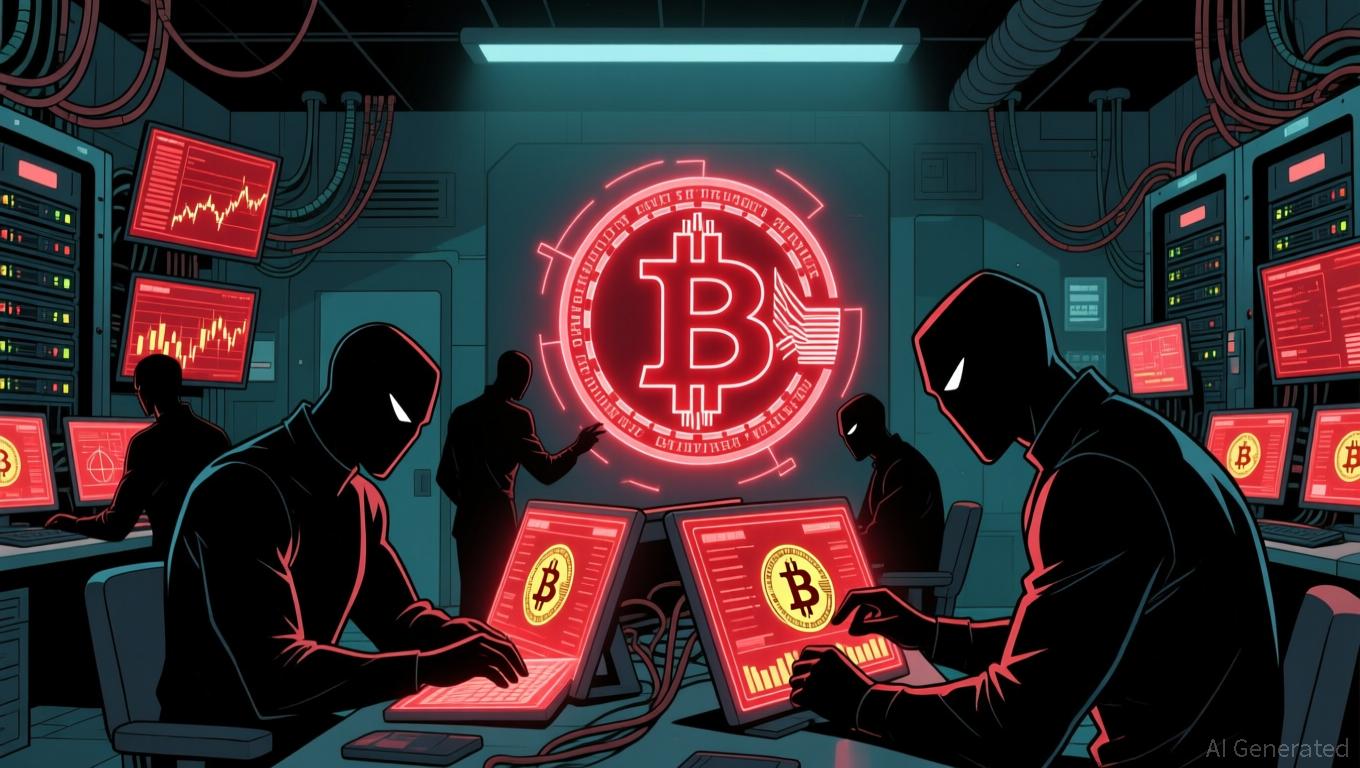Zcash Halving and Its Effects on the Crypto Market
- Zcash's November 2025 halving reduces block rewards by 50%, tightening supply and reinforcing its deflationary model akin to Bitcoin . - ZIP 1015's lockbox mechanism removes ~$337,000 daily liquidity, while ZEC's price surged 1,172% YTD amid privacy-driven demand and institutional adoption. - Institutional investments like Grayscale Zcash Trust and 5% supply acquisitions highlight growing acceptance as a strategic reserve asset. - Privacy-focused adoption (28% shielded transactions) and negative Bitcoin
Supply Structure and Scarcity Effects
Zcash’s halving process occurs every four years, reducing block rewards to control inflation and maintain the 21 million ZEC cap.
One notable change after the halving is the implementation of ZIP 1015, which brings in a “lockbox” system. This mechanism directs 12% of block rewards to multisig addresses managed by the community until a governance system (ZIP 1016) is in place.
Market Response and Investor Sentiment
The halving has already sparked a wave of speculation.
Derivatives markets also reflect strong bullish sentiment.
Institutional involvement is also on the rise. The Grayscale Zcash Trust, which manages $137 million, and
Investor Approaches and Managing Risks
To handle Zcash’s post-halving volatility, investors are using a range of tactics. One method is to use ZEC’s negative correlation with Bitcoin as a hedge during broader market declines. For instance,
Another approach centers on demand for privacy. With 4.5 million ZEC held in zk-SNARKs pools, some investors are betting on Zcash’s utility for confidential transactions, which could shield it from speculative cycles. Additionally,
Nonetheless, there are ongoing risks. Regulatory attention on privacy coins remains unpredictable, and any restrictions on shielded transactions could hinder adoption. Short-term price swings may also be worsened by miners selling off coins, as lower rewards could push them to liquidate.
Summary
The Zcash halving in November 2025 brings together limited supply, institutional backing, and privacy-focused utility. While past trends point to a bullish outlook, investors should weigh optimism against potential risks. Innovations like ZIP 1015 and increased institutional participation offer a solid base, but regulatory challenges and miner responses could cause short-term instability. For those prepared to navigate these factors, Zcash’s distinctive role as a privacy-oriented, deflationary asset presents attractive prospects in a diversifying crypto landscape.
Disclaimer: The content of this article solely reflects the author's opinion and does not represent the platform in any capacity. This article is not intended to serve as a reference for making investment decisions.
You may also like
Vitalik Buterin's Perspective on ZK Technology: Driving Crypto Infrastructure Forward and Enabling Sustainable Value Creation
- Vitalik Buterin champions ZK technology as Ethereum's scalability and privacy cornerstone in 2025. - He proposes removing modexp precompile to cut ZK computational overhead by 50x, prioritizing ZK-native efficiency. - ZK integration with MPC/FHE creates hybrid cryptographic stacks, accelerating institutional adoption and 30% stablecoin transaction volume via rollups. - Projects like Polygon's Katana ($512M TVL) and ZKP's ZK-native blockchain demonstrate ZK's transition from experimental to infrastructure
Vitalik Buterin's Support for ZKsync: Driving Ethereum's Layer 2 Leadership and Unlocking Strong Investment Potential
- Vitalik Buterin endorses ZKsync's Atlas upgrade, signaling Ethereum's strategic shift to ZK-based scaling solutions. - Atlas enables 15,000 TPS with 1-second finality, unifying Ethereum's Layer 1 and Layer 2 liquidity through ZK proofs. - ZK token surged 50% post-endorsement as institutional adoption grows, driven by deflationary tokenomics and enterprise-grade scalability. - Upcoming Fusaka upgrade aims to double throughput to 30,000 TPS, solidifying ZKsync's competitive edge in Ethereum's Layer 2 ecosy
UK Investigation Connects Tether to Financing Conflicts and Political Contributions
- UK authorities dismantled a £25M stablecoin laundering network linking UK crime to Russian war funding via Tether (USDT), with 128 arrests and cash/crypto seizures. - Russian intelligence exploited similar crypto networks to fund a spy ring led by ex-Wirecard executive Jan Marsalek, channeling £45K through Tether for espionage and assassination plots. - Tether's UK political ties emerged as major donor Christopher Harborne, who owns 12% of the stablecoin, donated £10M to Nigel Farage's Brexit Party amid

Ethereum News Update: Investors Move Toward Ozak AI as AI-Powered Blockchain Exceeds $4.5 Million in Presale
- Ozak AI's $4.5M presale surges as analysts predict 83x price growth to $1 by 2026, driven by AI-blockchain integration. - Platform combines AI prediction agents with DeFi optimization, partnering with Perceptron Network, HIVE , and SINT for decentralized automation. - Ethereum investors shift capital to Ozak AI, viewing it as a next-gen complement to traditional blockchain infrastructure amid ETH's consolidation phase. - C3.ai's 27.4% stock decline contrasts Ozak AI's momentum, as AI sector volatility hi
